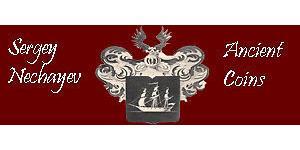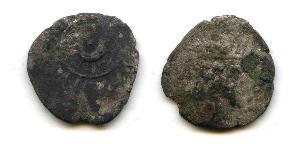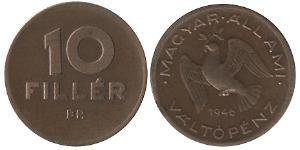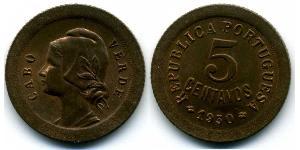[ 4328] Alexander Jannaeus (Yehonatan) King of Judaea 103-76 B.C. Bronze Lepton (14 mm, 0.81 gm.) Jerusalem, 78 B.C. Reference: Hendin 471. Upside down anchor within circle, BAΣΙΛΕΩΣ AΛΕΞAΝΔΡΟΥ. The letters L KE, made of dots connected by fine lines, appear at the points of the anchor on some of the coins. Star of eight rays surrounded by border of dots and Aramaic inscription (King Alexander Year 25). AJC I, Group Cd. Provided with certificate of authenticity. CERTIFIED AUTHENTIC by Sergey Nechayev, PhD - Numismatic Expert The Lesson (or Parable) of the widow's mite is a story present in the Synoptic Gospels (Mark 12:38-44, Luke 20:45-47,21:1-4), in which Jesus is teaching at the Temple in Jerusalem. The Gospel of Mark specifies that a mite was worth less than a quadrans, the smallest Roman coin, implying that Mark's intended audience were more familiar with Roman culture than with Jewish. In Jesus' times there actually was no coin called a mite. However, there was a mite in the time of the King James translation. The denomination is well known in the Southern Netherlands. Both the duke of Brabant and the count of Flanders issued them and they were sometimes imitated in the North. Originally, the Brabant mijt (maille in French) was 1/76 stuiver, the Flemish mijt 1/48 stuiver. When the two areas were united under the dukes of Burgundy and later under the Habsburgs, the rate of the mijt was set at 1/32 stuiver. More important, they were the very smallest copper coins. By 1611 they were no longer made, but they still circulated. It was almost a social obligation to give a silver coin at church collections, for there were many framed money galleries and armored safes that needed to be filled. Only the very poor could get away with giving a copper coin and only the desperately poor would give a copper coin as small as a mijt, as their social status could hardly sink any lower. A widow would in principle have to live without any income. The translator probably had a beggar and a contemporary widow in mind. In 1611, all this would have been self-evident to the readers. Witnessing the donations made by the rich men, Jesus highlights how a poor widow donates only two mites, the least valuable coins available at the time. But, Jesus observes, this sum was everything she had to her name, while the other people give only a small portion of their own wealth. Taken literally, the widow's donation of one mite could have been by obligation, since she could not have given any less. Following this reasoning, some interpreters note that Jesus sits down in judgment "opposite" (over against, in opposition to) the treasury; the lesson drawn emphasizes that, while people are impressed with the large sums that are put in, they did not notice that the temple took half of what the "poor widow" had to live on. Connected with Mark 13:1-2, "there will not be left one stone upon another, that will not be thrown down", the lesson is then interpreted as promising the overthrow of any worship of God sustained by robbery. However, since the woman would have been under no obligation to give the second mite, when she gave "all her living" she could not have given any more. Following this reasoning, the tale is typically understood by Christians as a condemnation of the rich as they are described, for their inflated self importance displayed by the ostentatious announcements of their own generosity: which Jesus dwarfs by comparison to the widow's mite. Also, in light of its proximity to the widow's mite story, Mark 13:1-2 may imply that the widow's worship is of greater value than the Temple. Accordingly, the story is typically taken as an admonition to be wholeheartedly devoted to God, rather than concerned with pleasing men. In earlier times, many Christians, especially the Gnostics Ebionites, Waldensians, and Franciscans, argued that the passage is an encouragement to live in poverty, and not seek r ...
type to read more

|
Posted by:
anonymous 2015-08-18 |
Similar Coin Groups
2024-04-26
- New coin is added to 1000 Reis Kingdom of Portugal (1139-1910) Silver Carlos I of ...
1000 Reis Kingdom of Portugal (1139-1910) Silver Carlos I of ...
group has 12 coins / 10 prices
⇑
1898, Portugal, Carlos I. Silver 1000 Reis "Discovery of India Anniversary" Coin. 4th Centennary of the Discovery of India Commemorative! Mint Year: 1898 Reference: KM-539. Denomination: 10 ...
2024-04-26
- New coin is added to 3 Mark Kingdom of Saxony (1806 - 1918) Silver
3 Mark Kingdom of Saxony (1806 - 1918) Silver
group has 38 coins / 36 prices
⇑
1913, Saxony. Silver 3 Mark Coin. "Battle of Leipzig!" Coin. NGC MS-64(+)
On the 100th anniversary of the victory over Napoleon.
Mint Year: 1913
Reference: KM-1275.
Mint Place: Muldenh ...
You may be interested in ...














-300-150-BZEKbzbifdQAAAFLyHbk0KRF.jpg)

-300-150-22kKbzbiRvQAAAFLAgnk0KhO.jpg)






